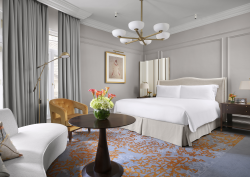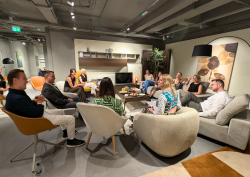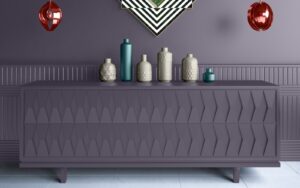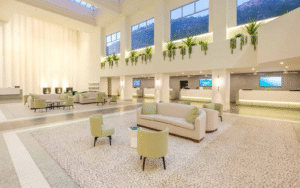Following the numerous exclusive Hotel Designs panel discussions and roundtables that the designer has been part of recently – and before we take over the studio’s HQ for MEET UP London on April 24 and she joins us for Interior Design & Architecture Summit on June 26 – we thought it was about time we really got to know Maria Cheung, Director of Interiors at Squire & Partners. Editor Hamish Kilburn writes…
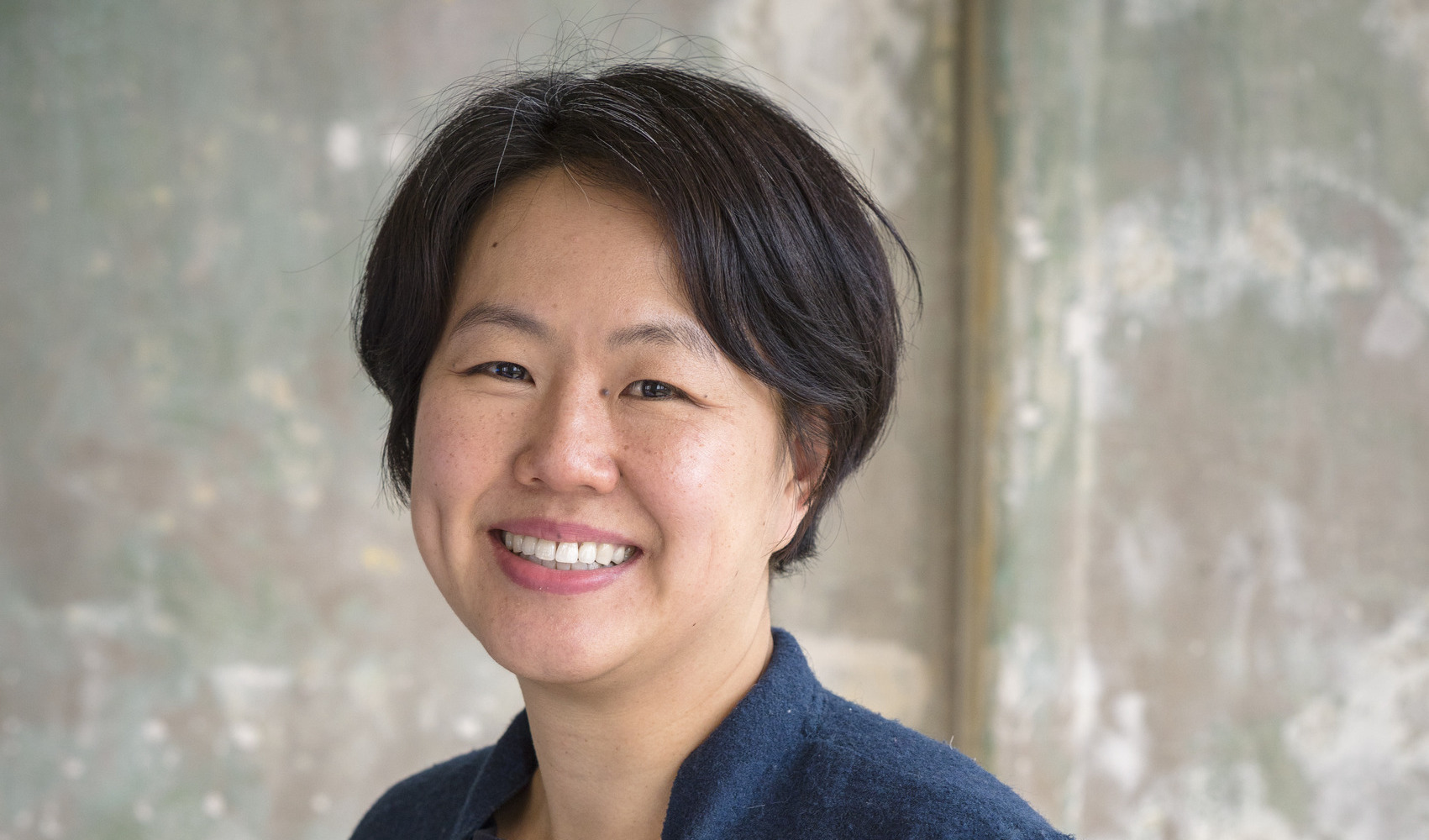
The hotel design and hospitality industry has a situation on its hands. Since studios started to put more emphasis on collaboration – in-house as well as with external brands – and the focus was centred around talent and skill over whom ever could shout the loudest, there has been a shortage of divas. Gaining from the depletion of design dictators (I mean directors) who sit on thrones and a complete change in mindset to see and feel the value of true teamwork, the hotel design industry has ushered in a new, fresh era that is being fuelled by people who much prefer to lead from within the pack of a team.
One of those individuals who finds strength as an interior designer in research, development, data and communication is Maria Cheung who heads-up the interior design team at Squire & Partners. I decided to meet the designer following the studio’s presence at Surface Design Show where the team showcased an impactful installation with Stone Tapestry that focused on exploring locally sourced natural stone. “In line with the show’s theme of ‘shaping communities’, we focused the installation on exploring some of the natural stones that have helped shape and create towns and cities across the UK and Europe, particularly within the British Isles,” she said. “We discovered the wide variety of different stones within the British Isles, with varying colours and characteristics, and how they change when different textures are applied.”

Image credit: Stone Federation/Surface Design Show/Squire & Partners
Our conversation takes place at an apt time, while the studio peels back the layers of its most recent research project and gears up to take part in one of Hotel Designs’ next roundtables, which has largely been inspired by the studio’s openness when it comes to new materials. That roundtable, which will take places hours before MEET UP London, will be sheltered, by no coincidence, inside the same venue as the party itself. Upstairs at The Department Store – a quirky private members’ club attached to the studio’s HQ in the heart of Brixton, was designed by Cheung and her team. “The Department Store is incredibly special to us; it was a dilapidated, former department store built in 1906 which we sought to reimagine as our offices back in 2017,” the designer said. “Our focus was on revealing the beauty and history of the building through craft and collaboration, and with sensitive, contemporary interventions.
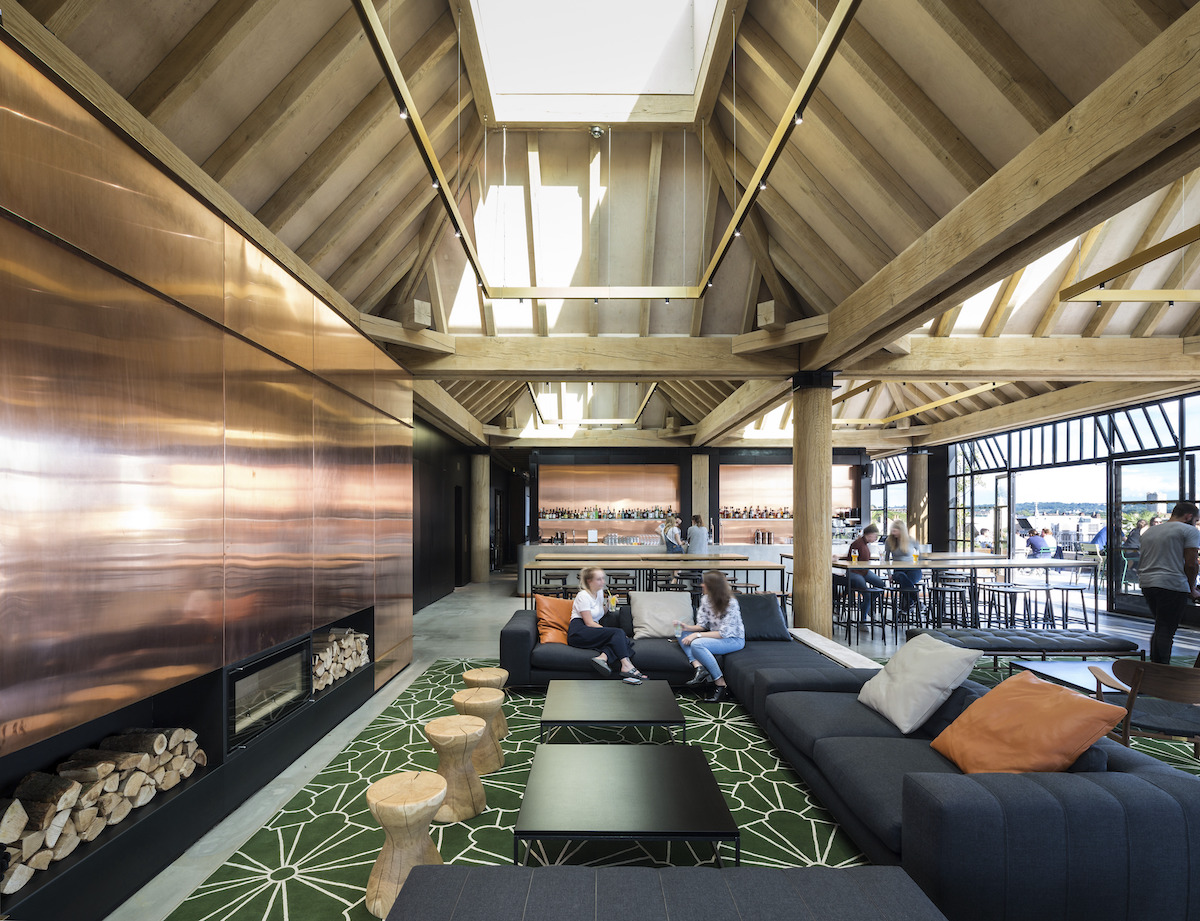
Image caption: Upstairs at The Department Stone, the venue for MEET UP London. | Image credit: James Jones
“The Department Store is a great collaboration story between designers, artists, craftspeople and contractors to expose and celebrate the layers of history that were embedded in its fabric. Weaving in a new narrative, the change of use from its original intention as a department store to our HQ comprises the different design departments of Squire & Partners, as well as opening it up for public use through a series of events spaces. These include the new rooftop bar/restaurant and terrace known as Upstairs – where MEET UP London will be hosted!”
And in terms of the conversation that we will be unapologetically putting under the spotlight during that roundtable? Cheung is clued-up on the variety and value of stone in hotel design – more so, perhaps, than any other designer I know. “There has been a development in our understanding that there is a wide variety of stones available, and that applying different finishes can transform the look and feel of the material,” she explained. “For instance, a busy vein-filled stone may be calmed and made more uniform by applying a honed texture. This allows different stones to be used in many more applications, therefore reducing potential waste.”
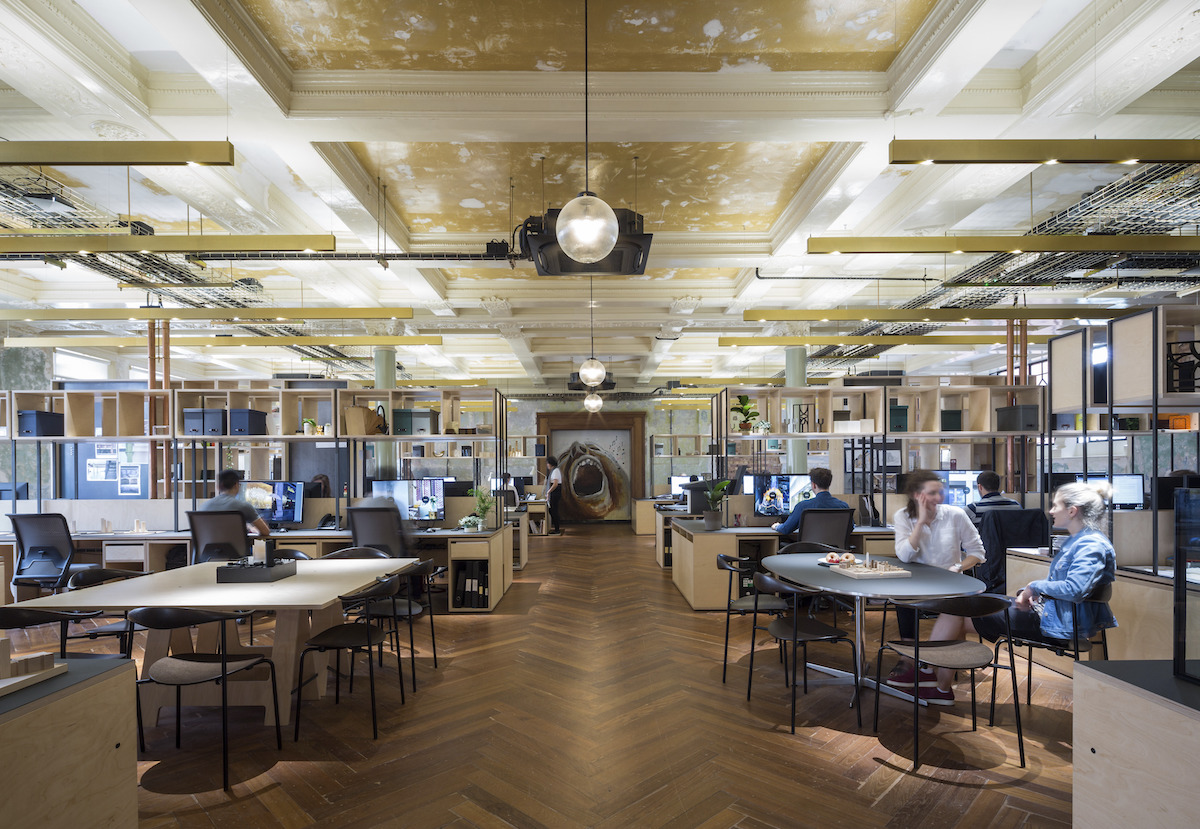
Image caption: Design studios designed right, inside Squire & Partners’ HQ at The Department Stone in Brixton. | Image credit: James Jones.
What is and what isn’t environmentally friendly is a subjective matter at the best of times in commercial interior design. And with a lot of talk on design studios achieving carbon-neutral (embodied carbon) status in projects, I am keen to understand the role of stone moving forward. “There is a lack of transparency within the stone industry on the carbon footprint of the extraction process,” adds Cheung. “Until this information is provided by quarries, real analysis between different materials cannot be made. However, The Ethical Stone Register has made improvements by providing a tool that offers a single source point for ethically and responsibly sourced natural stone, with requirements that member suppliers must comply with.
“Understanding how selected stones are extracted, the impact on the local environment, as well as the welfare of the workers in the quarries, needs to be part of the selection process. We can rely on bodies such as The Ethical Stone Register and be inspired by projects such as Honister Slate Mine and Tout Quarry, which show that former quarries can be converted into wonderful nature reserves and outdoor adventure destinations, offering employment in the local area and new landscapes for visitors to enjoy.”
Outside of research and development, the projects that are benefiting from this human-centric approach to design and materials are no shrinking violets. Ruby Hotels, which first launched in the UK in 2018, is about to add to its London portfolio of hotels with the arrival of the 173-key Ruby Zoe, which will be located in Notting Hill Gate West. “The six-storey building will provide 173 rooms, along with retail that wraps around the ground floor to activate the streetscape at both the front and rear of Notting Hill Gate.
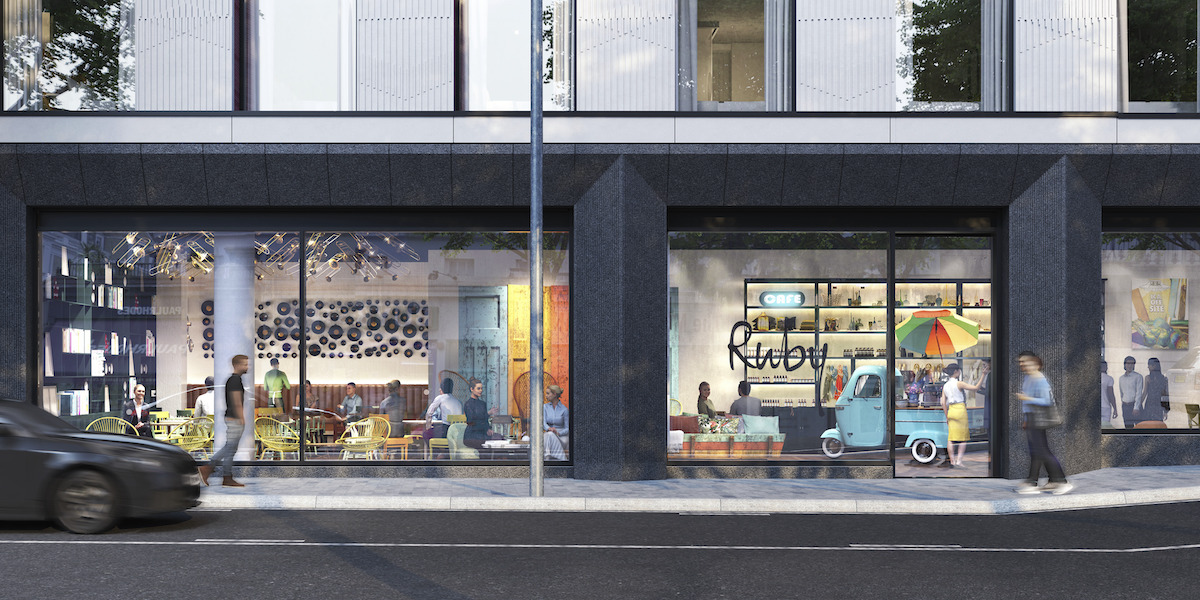
Image credit: Ruby Hotels / Squire & Partners
“A reception/bar will welcome guests, flanked either side by two large, lively lounge/café/dining areas. The spaces will be focused on lifestyle and music: it is intended that live music will be performed regularly. Drawing upon the Notting Hill neighbourhood – in particular the carnival and its Caribbean roots – we were inspired by the decayed decadence of Cuban interiors. Working closely with Ruby Hotels’ in-house design team, we took some of those textures and patinas into the interiors. Fun installations with musical instruments and speakers, feature pendant lights made from plastic bottles and a patterned floor will all add to the dynamic experience.”
And finally, having teased us for far too long, the studio is edging closer to the completion of art’otel London Hoxton. “Our design of art’otel London Hoxton responds to the cultural identity of the nearby Silicon Roundabout – a hub for many technology companies – with a concept that makes a subtle nod to the development of the computer: without which Silicon Roundabout would not have its name,” added Cheung. “The architectural form and cladding of the building is inspired by the mechanical components of early analogue computers, with a cylindrical shape that rises to 26 storeys – maximising city views in all directions. Alongside 340 guestrooms, the hotel will provide a gym, spa and pool, art gallery, cinema, restaurant, bar and lounge.
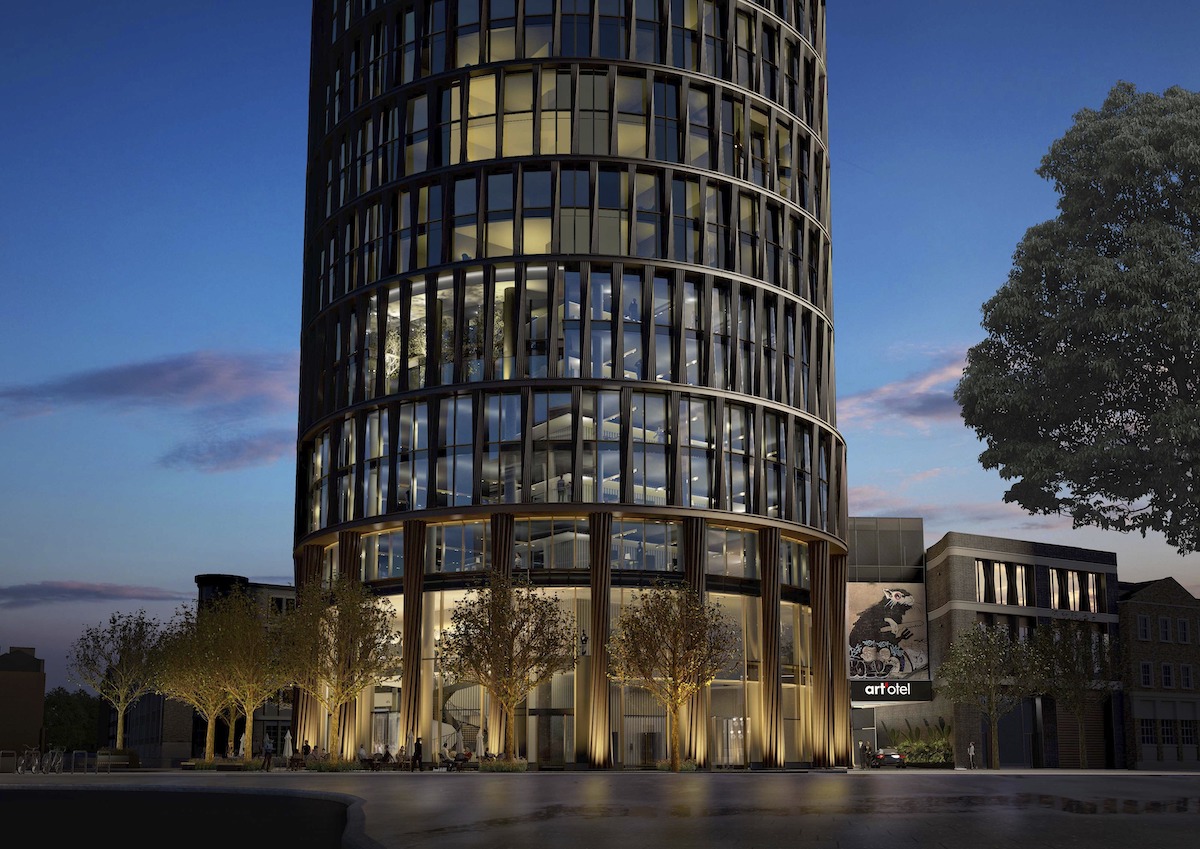
New hotel on the block. Art’otel London Hoxton will be sheltered inside a cylindrical building. | Image credit: Squire & Partners
“Also incorporated into the design are two Banksy artworks which were part of the original site, conserved and displayed either side of the base of the tower. We’re really excited to see how our ideas for this prominent site develop into an important part of Shoreditch’s urban fabric.”
With 2023 set to become a milestone year for London’s hotel design and hospitality community, it’s clear that Squire & Partners, quite rightly, is going to have its chapter and moment in the history book. And that chapter will be written by interior designers like Cheung who, time and time again, put the project and people first.
How to attend Interior Design & Architecture Summit (IDAS)
If you are a supplier and would like to attend IDAS, to take part in the pre-arranged, face-to-face meetings with designers, please email Olivia Jackson, or call 01992 374064. If you are a senior designer and/or an architect and would like to enquire about a complimentary delegates ticket to attend the event, to hear Cheug speak on the ‘Green Agenda’, please email Daniella Batchelor or call 01992 374086, or email.
Squire & Partners are Exclusive Style Partners for MEET UP London, which takes place on April 24. The event is sold out, but tickets have gone on sale for MEET UP North, which takes place on July 6 at Yotel Manchester.
Main image credit: Squire & Partners






